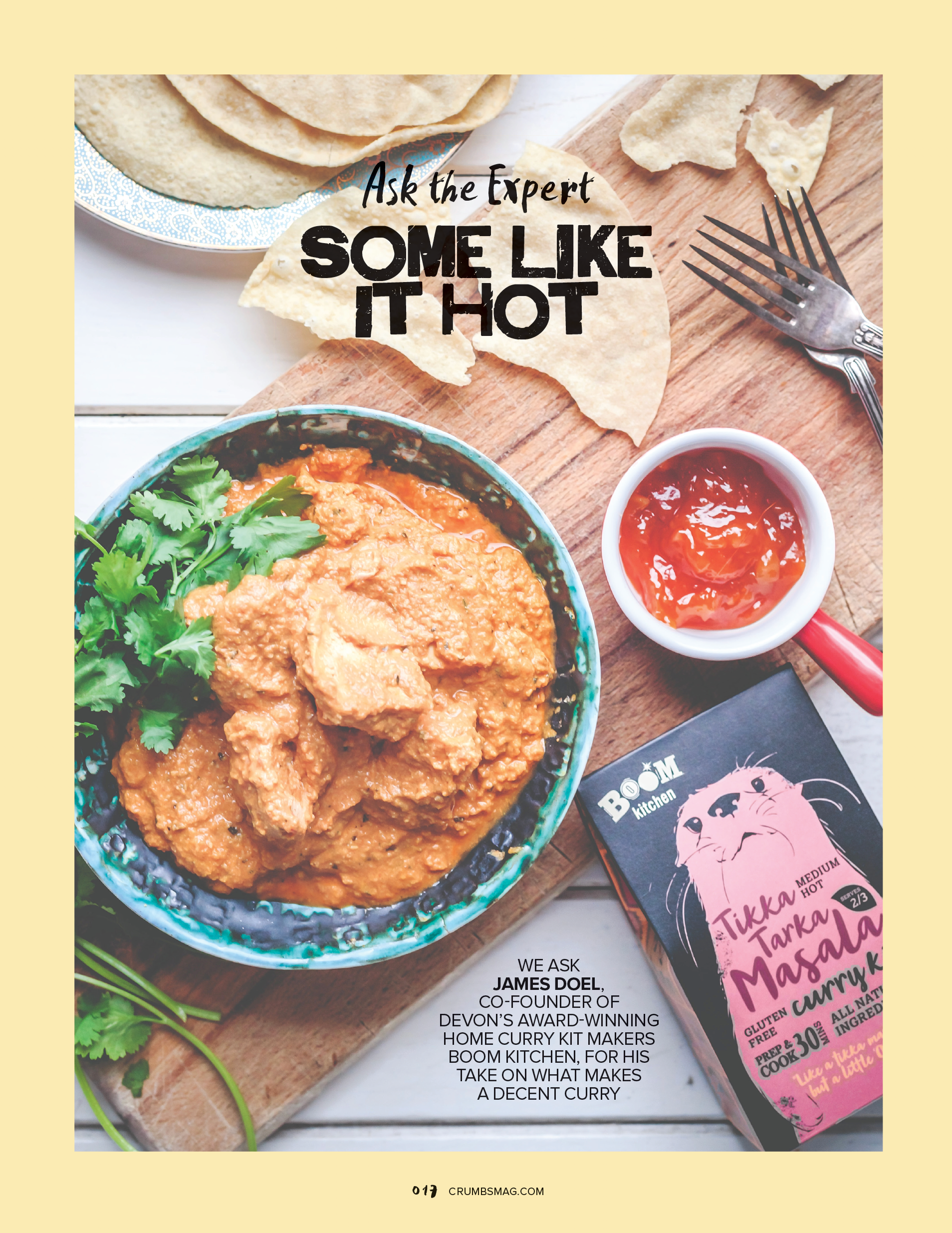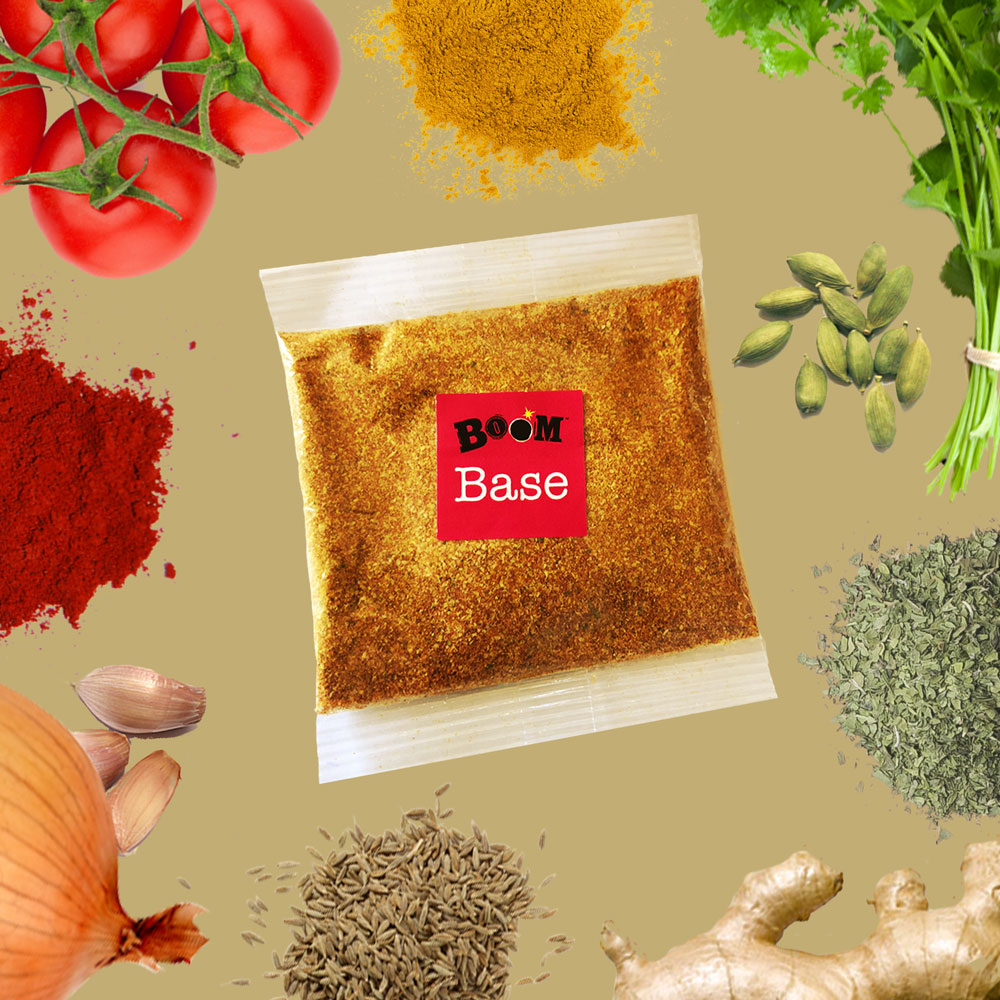
Hi James, great to meet you. Tell us, why do you reckon we Brits love curry so much?
I think the reason we love it, and that it’s become a national institution, is because we’ve made the dishes our own. They’ve evolved – in and out of India – for hundreds of years to appeal to us Brits, and that evolution continues today with products like our own.
But I also think it’s easy to understand why any nation might fall in love with curry. It’s colourful, vibrant, spicy – almost the perfect comfort food, and a great antidote to traditional British dishes.
All this being the case, then, I find it harder to understand why a nation wouldn’t embrace curry. I’m always amused by the reaction we get from some of the French people we meet at events – it’s almost like we’re living in a parallel universe, with terms like korma, bhuna and jalfrezi completely alien to many French people. They don’t know what they’re missing!
What do you know about the history of curry eating in the UK? When did it all begin?
The curry has a fascinating history – Hollywood could only do it justice by bringing Bill and Ted back to do an excellent adventure in curry through the ages. Here’s a brief history…
14th century – Richard II’s chefs document a recipe for a spicy stew, using a spice mix not a million miles away from today’s garam masala.
15th century – Portugal’s Vasco De Gama introduces chillies to India.
17th century – The East India Company is established, creating trading routes between Britain and India. Back home, curry starts appearing on restaurant menus.
19th century – Nationalisation of the East India Company brings in the British Raj era. The jalfrezi is born, as Indian chefs spice up leftovers from expat Sunday roasts by stir frying meat with chillies and onions.
20th century – Urban legend credits chef Ali Ahmed Aslam as creator of the chicken tikka masala. In fact, Ali is said to have improvised a sauce with tomato soup, yogurt and spices in an attempt to appease a disgruntled Glaswegian bus driver!
For the full curry timeline, check out our blog: boomkitchen.co.uk/blogs/news
There are so many curry varieties – Indian, Thai, Sri Lankan, African, Caribbean… What do they have in common?
For me, they all share the holy trinity that makes a curry: meat or veg, sauce and spice. It’s that simple. Different countries have different twists, though, based on ingredients readily available, local preferences and traditions. Even curries that you might associate with one country tend to have an interesting cross-border history. Take the vindaloo, which you can get in any curry house in the UK today. It originated in Goa in the 16th century, but was actually inspired by a Portuguese dish that marinated meat in wine. The Goans then added chillies to make the dish we recognise today.
But where did they get the chillies from? The Portuguese again, who introduced them to the Indian continent in the 1400s via Central and South America.
How different are British curries to traditional Indian or Sri Lankan curries?
Some of the recipes are fundamentally different; for example, Indians don’t eat a tikka masala! That’s a dish we’ve made our own. However, cook with our Sri Lankan curry kit and we like to think it’s exactly the same as you’d get if you were in Mirissa Beach, Sri Lanka, where Carl [Anderson – co-founder of Boom Kitchen] discovered the recipe.
For us, that’s what it’s all about. If you’re scratch cooking with the right ingredients there’s no reason a curry you make in your kitchen can’t taste like one cooked in India or Sri Lanka.
In your opinion, which country is the king of curries, and why?
For me, it’s Sri Lanka. They can do so many things with fruit and vegetables that will make your eyes water!

Which ingredients are key to a good curry?
The essentials, if you like, are a good spice mix made with fresh spices and whole spices, plenty of fresh ginger and garlic and some fresh coriander. A cold beer and some tunes when cooking will make all the difference!
How do you alter the heat of a curry?
Chilli! Fresh, dried or powdered, it doesn’t matter too much. Add a little to the pan, then taste, as it’s easy to make it hotter. If you overdo it, chuck in some coconut milk or natural yogurt. Basically, any product containing fat will dilute the capsaicin, which is the chemical in the chilli that makes it hot.
What about curry powder? We're never very sure about it. What, exactly, is it?
Curry powder is simply a mix of various ground spices. Asian families will have a curry powder recipe that’s handed down through generations. I was fortunate enough to be given a few different recipes when I was travelling; it’s what goes into our kits.
What do you think are the common mistakes people make when preparing a curry?
Using a Lloyd Grossman jar. Or using spices in your cupboard that have been knocking around for ages. They’ll have lost their taste.
What should we serve with our curry?
It comes down to personal preference, and depends on the type of curry. If it’s got plenty of sauce, then I like a chunk of naan bread to mop it up. I also like a cold beer, a good pickle selection or a vegetable side. Sri Lankan beetroot curry is one of my favourites, made with our Sri Lankan kit.
What should we drink with curry?
Whatever you like! We’re quite partial to a dry cider with our milder dishes, like Karma Korma and Tikka Tarka Masala – nothing too sweet, as the dishes are naturally quite sweet, so it’s nice to have that dry edge to cut through. Aspall Cyder is a favourite. Then, with our spicier dishes, we like big, hoppy, American style IPAs. If you’re looking for pointers you can’t go wrong with 13 Guns from Crafty Dan, Neck Oil from Beavertown Brewery and Punk IPA from Brewdog.
Where did the idea for Boom Kitchen come from?
We just wanted to make it easy for people to scratch cook ‘authentic’ healthy curries at home. When we first started in 2012, the supermarkets were full of gloopy jars of sauce that didn’t cut the mustard health-wise or in terms of flavour, with loads of added salt and sugar.
How do you come up with the recipes?
Carl did a lot of travelling when he was younger, and made a habit of collecting his
favourite recipes – many of them begged and bribed from restaurant owners, chefs and local guesthouses. He’s got an amazing folder full of them all written on till receipts, postcards, and torn out pages from the Lonely Planet.
What makes a Boom Kitchen curry unique?
Beyond our attention to detail when it comes to sourcing the best quality spices and ingredients from Indian and Sri Lanka, I think it’s our focus on the scratch cooking experience.
Okay, so talk us through the way your kits are made.
You may regret asking this, but here goes… We don’t make one kit at a time, and that’s because some of our kits utilise the same building blocks. (For example, our Karma Korma, Tikka Tarka and Sri Lankan all come with the same measure of coconut.) Across the range, we have 12 unique building blocks – a building block can have up to 10 different sub ingredients that we need to grade and prepare – so, to make our lives simpler, we subdivide our production into five distinct categories: spice mixes, dried chillies, whole spice combos, coconut and, finally, Boom Base (our all-natural base onion gravy stock).
Once we have a good stash of each building block, we focus on bringing them together to make the individual recipes. It’s not rocket science, but we closely monitor our stock levels. Run out of a single ingredient and the whole machine can grind – or not grind! – to a halt. It’s a finely-tuned juggling act.
How big is the Boom Kitchen operation?
We currently have four staff and operate from the most picturesque industrial estate you can imagine, with sea views out towards the North Devon coastline near Ilfracombe. And where do you sell your curry kits? In independent farm shops, delis and online via our website. And hopefully soon in Ocado, too.
Finally, what’s next for Boom Kitchen?
In 2019, we’re continuing our expansion into new cuisines. Currently we have Indian and Sri Lankan kits, but later this year we’ll have a Moroccan tagine kit and a Spanish paella kit, too. You heard it here first!

